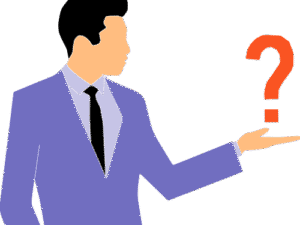Free Selling Skills Training
- Description
- Curriculum
Free sales training course on the topic of selling skills. These eight sales lessons cover sales topics such as the new rules of selling and how to make sales presentations or sales pitches. Click on the “Curriculum Tab” to access the sales training course.
A Comprehensive List—Online Sales Training Courses,” functions as a guide for achieving success in sales, emphasizing that it’s a journey of continuous improvement rather than innate talent. It outlines essential elements like understanding product value and market trends, mastering the sales process from prospecting to closing, and building strong customer relationships through trust and effective communication. The lessons also highlight the shift in buyer expectations, because modern customers are well-informed and seek a logical analysis of their situation rather than simple product pitches. Ultimately, it provides actionable steps and advanced strategies for performance optimization and long-term account management, underscoring the importance of ongoing training and adaptation.
Check out all our online sales training courses.
Today, the sales reality is that social media and technology have rewritten the sales game. The most significant direct impact of social media or the web is that it has made available a lot of good-quality information for both buyers and sellers. The plethora of available information complicates the task of buying and selling in meaningful ways. Indirectly, this explosion of information has created confusion and a shift in how buyers buy and what they want from salespeople. Few salespeople ignore the direct consequences of the internet, but it is the indirect consequences that have the most significant impact. Those who choose to ignore the indirect consequences of the technology revolution, particularly buyer confusion, do so at their own peril.

It is hard for buyers to sort through what is good information and what is just noise. Buyers must learn to be more discerning about what they learn online and more critical of information. Ultimately, buyers are looking for the truth, but that truth often seems elusive, cloaked in opinions and positions that may lack validity. Buyers need to evaluate evidence, not just claims made by sellers and marketers. Many claims made by slick sales messaging are appealing, but they are not based in fact. The assertion that more information is better is false. Better information is better.
-
1The New Rules Of SellingPreview 5.00
A comprehensive overview of modern selling, defining it as an exchange of value and a process of influencing buying decisions. It introduces the ASAK equation (Activity, Skill, Attitude, Knowledge) as fundamental to sales results and discusses current selling challenges such as changing buyer habits and increased self-education. The text highlights five forces impacting selling and introduces DAPECS (Data, Analysis, Personalization, Extend, Experiences, Conversations, Strategy, Skills) as a framework for engaging digital-age customers. It differentiates sales from marketing, outlines core elements of selling (conversations and commitments), and details four building blocks in sales preparation (strategy, model, process, and tactics), emphasizing the evolving role of the modern seller as a strategic, value-adding partner.
-
2Your Keys To Sales SuccessPreview 7.00
The course focuses on helping salespeople sell change by identifying customer pains and gains, ultimately leading to a purchase. Key objectives include learning a working sales process, developing essential sales skills for each step, and understanding how to influence buying decisions through various tactics and multi-channel approaches. Ultimately, the program aims to equip participants with practical, proven skills to improve their sales results and confidence.
-
3Mastering The Sales ProcessPreview 7.00
The provided text outlines modern selling strategies, emphasizing that sales today are more intricate due to multiple decision-makers and extensive buyer research occurring before salesperson interaction. It highlights how the internet and social media have revolutionized sales, expanding reach and altering established models. The core of the material is an eight-step sales process designed to adapt to changing buyer behaviors in a digitally driven landscape, covering everything from planning and prospecting to overcoming obstacles, closing, and post-sale delivery. This structured approach provides a roadmap for salespeople to guide customers from initial awareness to a successful purchase, ultimately leading to greater efficiency and increased sales.
-
4The Psychology Of Selling TodayPreview 7.00
The Psychology of Selling: Motivating Buyer Action," emphasizes that successful selling hinges on understanding buyer motivations and emotions. It highlights that all buying decisions, even in B2B contexts, are fundamentally emotional, with feelings like trust, confidence, and optimism playing a crucial role. The text introduces "change" as the primary trigger for buying, explaining that customers act when presented with new, compelling reasons to alter their current situation. To facilitate this, the material outlines five "buyer change switches" (solution, trust, connected, evidence, and event) and three "customer feeling stages" (cold, warm, and hot), which dictate how information should be delivered to influence purchasing behavior. Ultimately, effective selling involves aligning messages and actions with these switches and stages to make buying easier and to foster emotional connections that drive both short-term decisions and long-term customer relationships.
-
5The Buyers Journey To A DecisionPreview 8.00
This source explores the modern B2B buyer's journey, emphasizing its dynamic and non-linear nature. It highlights that buyers spend the majority of their time on independent research rather than engaging with vendors, and their decisions are often triggered by pain of loss rather than potential gain. The text outlines five distinct phases of the buyer's journey: from initial unconcern and exploration to defining needs, choosing solutions, validating decisions, and finally confirming the purchase. Throughout these phases, the document stresses the importance of salespeople acting as facilitators and information curators, understanding the buyer's internal dialogues, and addressing the "Buyer Whys," which represent the emotional and strategic commitments necessary for a purchase to advance. The core message is that sales effectiveness hinges on understanding and guiding buyers through their complex journey by providing insights and addressing their concerns at each stage.
-
6Define Your Value PropositionPreview 6.00
The provided text offers a comprehensive guide to crafting effective sales value propositions, emphasizing their critical role in attracting customers and driving sales. It explains that a value proposition as part of a sales playbook clearly articulates a product or service's benefits, relevance, and differentiation compared to competitors. The text introduces the concept of FAB (Features, Advantages, Benefits), highlighting that benefits are most impactful to buyers. Furthermore, it details the importance of understanding Points-of-Parity (POP), which are common market attributes, and Points-of-Difference (POD), which are unique selling points that make an offering stand out. The document also provides practical frameworks, templates, and examples for developing strong, verifiable value propositions that answer a customer's fundamental question: "Why should I buy from you?" Finally, it advises on when to emphasize POP or POD based on market position and conditions, stressing that tangible proof is essential to validate any claims.
-
7Sales Objections Versus Buyer RoadblocksPreview 8.00
The provided text explores the concept of buyer roadblocks and sales objections in the sales process, distinguishing them from external obstacles like pricing. Roadblocks are internal, silent issues within a buying group that can derail a sale, often becoming apparent as commitments solidify. The text identifies four major roadblocks: preference for stability (status quo), anticipated regret, perceived cost of change, and selection difficulty. It explains how to address each, emphasizing the need for salespeople to act as change agents who understand and influence the cognitive and behavioral aspects of the decision-making journey. Ultimately, overcoming these internal resistances requires the combined forces of dissatisfaction, a clear future vision, and concrete first steps to outweigh the perceived costs of moving forward.
-
8Sales Presentations and PitchesPreview 7.00
The provided text offers a comprehensive guide to delivering impactful sales presentations, focusing on a structured approach to planning, preparing, practicing, and presenting. It emphasizes the importance of making presentations conversational and engaging, rather than simply informational, to combat audience disinterest and maximize retention. Key elements discussed include the Three V's of Communication (verbal, vocal, and visual) and their impact on credibility and likeability, the need to define clear objectives (educational or call-to-action), and strategies for structuring content with main points, supporting evidence, and compelling openers and closings. The text also highlights common presentation mistakes and the significance of presenting "bundles of value" to resonate with an audience.
-
9Sales Presentation Tips and InsightsPreview 6.00
-
10Master Sales OutreachPreview 8.00
-
11The Power of Asking For What You WantPreview 6.00
-
12Sales Strategy GuidePreview 9.00





